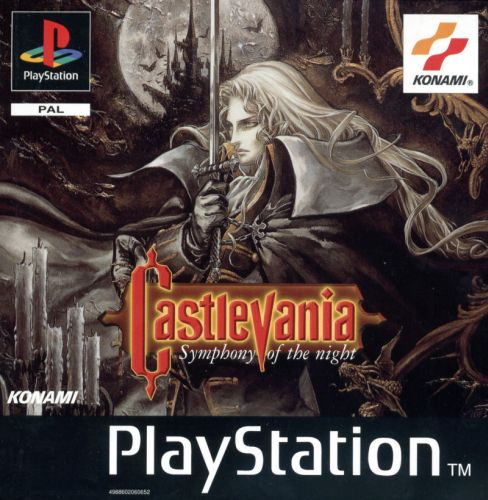
Together with 1994’s “Super Metroid,” 1997’s “Castlevania: Symphony of the Night” created a new genre. Image: Konami via AFP Relaxnews
Both iconic franchise debut “Castlevania” and eventual successor “Castlevania: Symphony of the Night” celebrate significant anniversaries this month, turning 30 and 20 years old respectively on March 20, 2017.
Whose anniversary is it again?
It’s a joint birthday party for the “Castlevania” series as a whole, and for its franchise-redefining, genre envelope-pushing entry “Castlevania: Symphony of the Night”.
Although “Castlevania” actually launched in September 1986, it was a subsequent March 1987 release that gave it wide exposure; its debut was limited to Japan and Nintendo’s Famicom Disk System add-on, while the North American release in 1987 was distributed in the Nintendo Entertainment System’s original cartridge format, no extra accessories required. And that’s when it started to take off internationally.
Twelfth in the franchise, “Castlevania: Symphony of the Night” was released on the series’ own 10th anniversary, a fitting choice given its eventual impact on not only the franchise’s legacy but also the development of its parent genre as a whole.
Why is “Castlevania” so important?
With the franchise’s vampire-hunting themes lifted from classic creature feature movies, “Castlevania: Symphony of the Night” took the concept behind 2D, sidescrolling games like “Super Mario Bros.” and replaced level-based progression with a single, sprawling, interconnected map.
Players were free to tackle the map in a non-linear manner, though in reality their progress was gated by the need to retrieve specific tools, treasures, or equipment.
Adapting and building upon elements from Nintendo’s “Legend of Zelda” and, most notably, the “Metroid” series, such was its influence that games of the same type are now frequently referred to as “Metroidvanias.”
By contrast, the first “Castlevania” is now known more for its difficulty rather than envelope-pushing genre innovation.
What can I play that’s like it now?
The original “Castlevania” is available on Nintendo’s Wii, Wii U, and handheld 3DS via each console’s online eShop, though remake “Super Castlevania IV” offers a more accessible entrypoint. “Symphony of the Night” is on the PlayStation Store (NA and JP) and the Xbox Games Store (international).
As for 2D Metroidvanias as a whole, there are a number of well-rated recent examples, which between them cover a clutch of modern devices.
There’s the audacious genie adventures of “Shantae: Risky’s Revenge” (iOS, PS4, Windows PC, DSi, Wii U), Mexican-inspired scramble “Guacamelee!” (PS4, Xbox One, Mac, WinPC, Linux, Xbox 360, Vita, Wii U), and beloved one-person tribute “Cave Story” and its commercial edition “Cave Story+” (PC, Mac, Linux, Switch, 3DS, DS, Wii).
More appropriately challenging in relation to the original “Castlevania” is the deviously difficult “VVVVVV” (Android, iOS, PS4, 3DS, WinPC, Mac, Linux, Vita), while “Shovel Knight” (PS4, XBO, Switch, 3DS, PS3, WinPC, Mac, Lin) adds randomization to the formula and “Aquaria” (Android, iPad, WinPC, Mac, Lin) offers a more serene aesthetic. JB